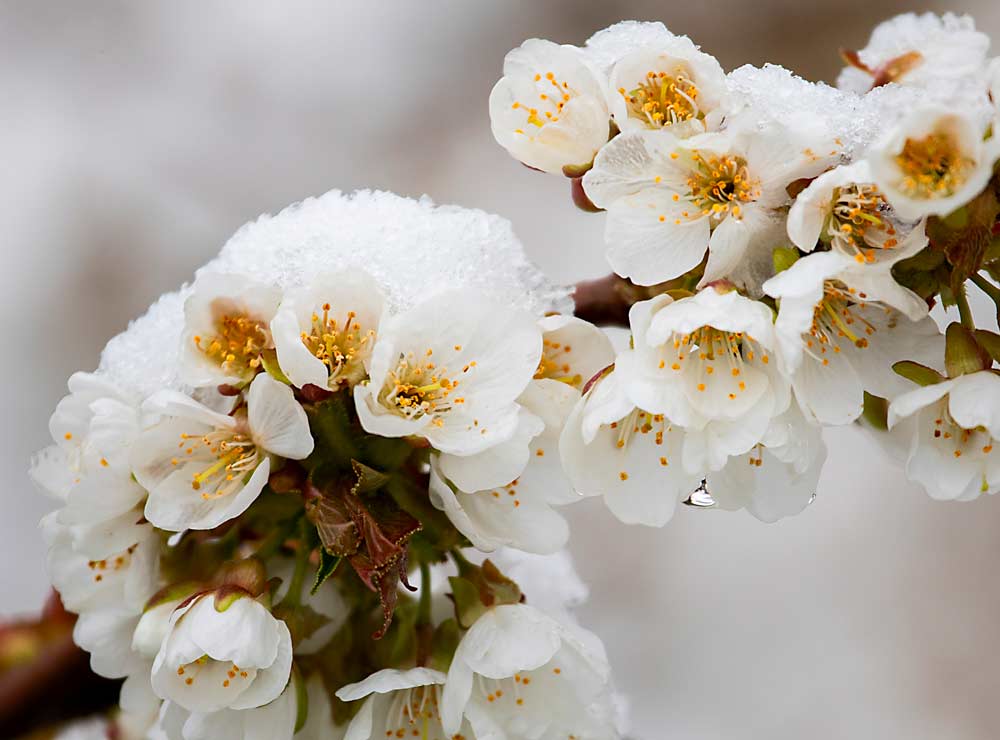
Concerned about frost and poor pollination weather, nearly 250 Pacific Northwest fruit growers logged into a hastily organized Washington State University web meeting on April 12.
Growers had been peppering their consultants, extension specialists and researchers with so many questions that Matt Whiting and Bernardita Sallato of WSU put together the web meeting to address them efficiently.
“We’ve spent a lot of time on the phone talking about weather,” said Whiting, a tree fruit physiologist based at WSU’s Irrigated Agriculture Research and Extension Center in Prosser. Sallato is a tree fruit extension specialist, also based in Prosser.
Topics included wind machines, snow, lack of bee flight and blossom thinning, all related to a mid-April cold front that has ushered in unseasonable snow and below-freezing nighttime lows during critical bloom time for apple, cherry and pear growers.
It wasn’t a webinar in a traditional sense. Whiting and Sallato shared no slides, and not every question was answerable. Instead, the entire group shared ideas and tips. Among the highlights:
—If snow settles on blossoms, don’t try to remove it. The snow doesn’t hurt, and it can even help.
—Use caution with wind machines in windy weather, because they can break down. Manufacturers would second that caution.
—Most growers advised using water as frost control, even with snow on the ground. When water freezes, it releases heat and protects buds.
—If using over-tree water for frost control, leave it on. “You don’t want to stop midway,” said Sam Godwin, a Tonasket, Washington, grower.
—Cool weather dampens bee activity, but it lengthens the pollination window.
—Some growers apply diKaP (available phosphate and soluble potash), a foliar spray.
—Ease up on chemical bloom thinning, said Tory Schmidt, research manager for the Washington Tree Fruit Research Commission. Assess fruit set, then get aggressive with postbloom sprays if needed.
—And one more bit of wisdom from Schmidt: “With cooler temps, everything will be growing more slowly, so it might take a few extra days to differentiate between what is growing and what will abort. Just be patient.”
—by Ross Courtney






Leave A Comment